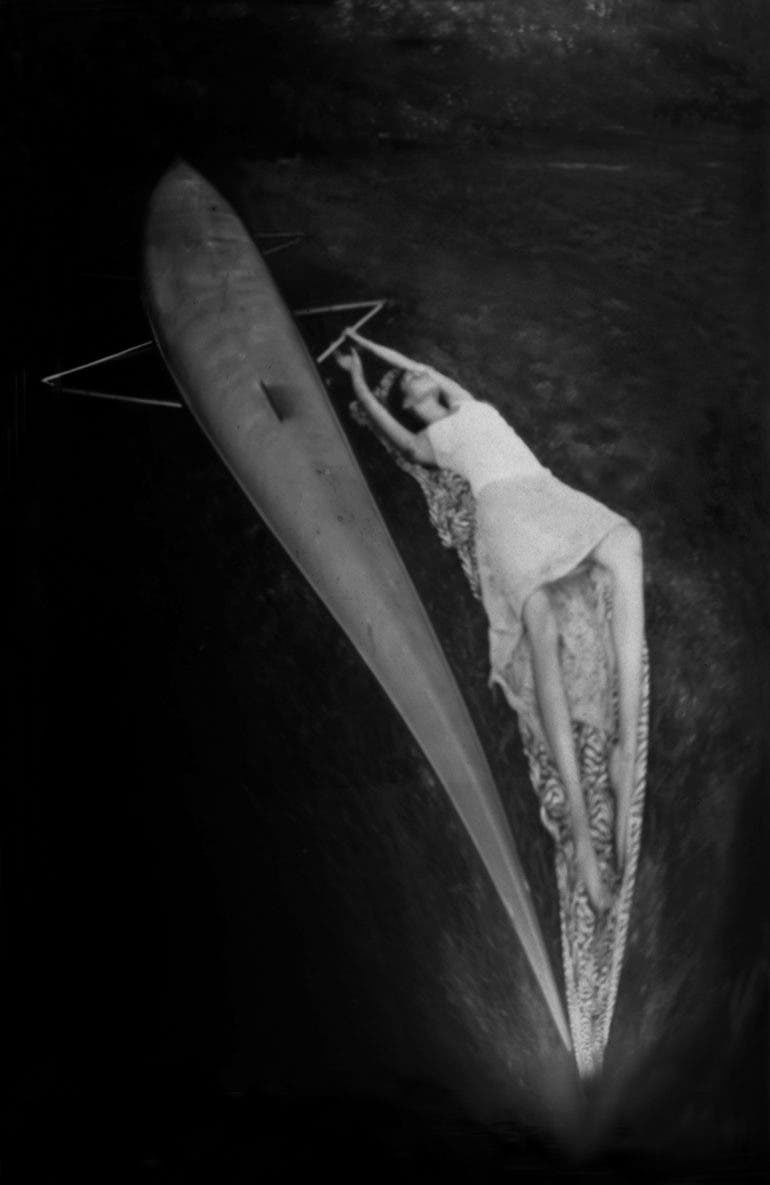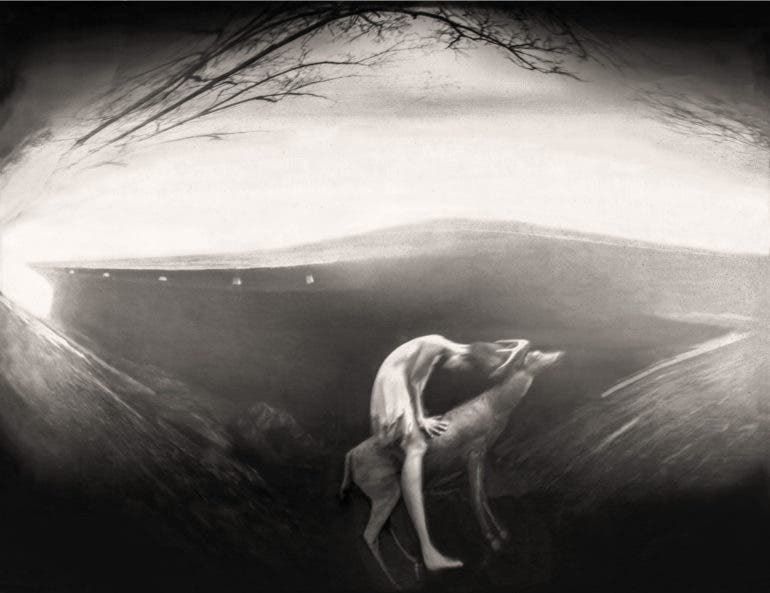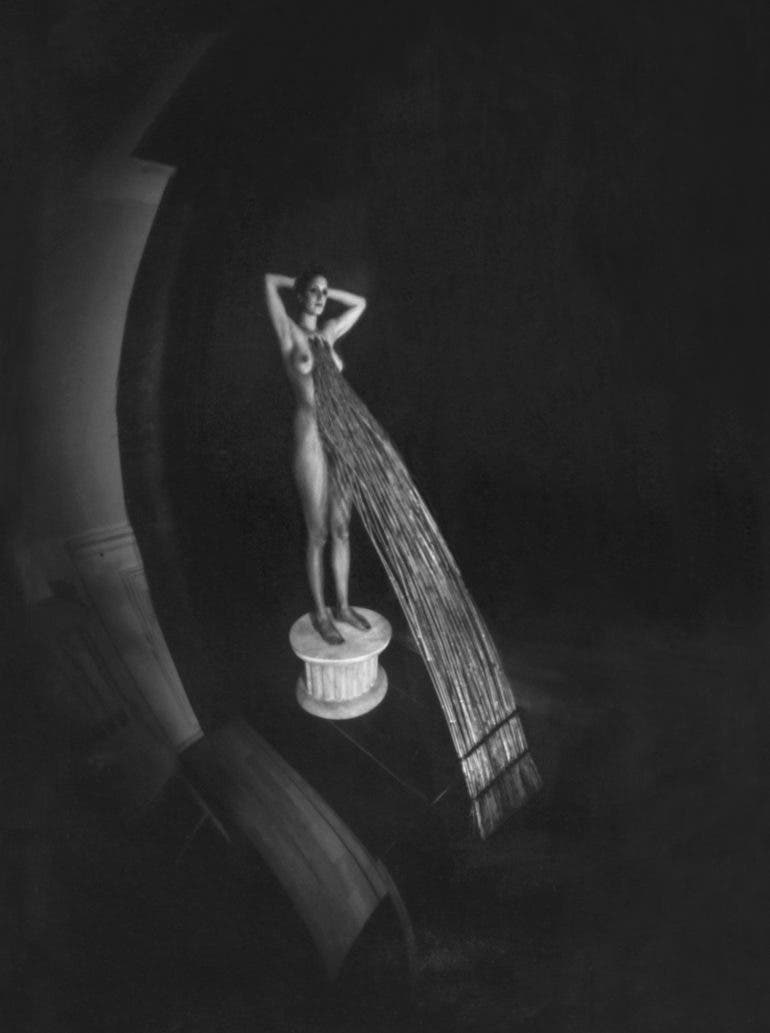Sharon Harris Makes Surreal Images with Simple Pinhole Cameras
“I find it seductive that a pinhole camera has no viewfinder,” says photographer Sharon Harris regarding what she finds appealing about pinhole photography. The minimal approach to this kind of art is something she embraces wholeheartedly, along with the visually distinct results it produces. Impressively, Harris makes all her pinhole cameras, and she currently boasts 25 creations. It’s something we’ll look into with more detail through the course of this fascinating interview.
Want to get your work featured? Here’s how to do it!
In today’s world of instant gratification, LCDs on cameras are something we can’t seem to live without. Compose, click, and view (LCD) appears to be the 1-2-3 way of taking a picture these days. Imagine trying to go through a whole shoot without reviewing the images you shot. That’s what it was like (and still is) on film cameras. Now how many of you would try to compose a photo without a viewfinder. Not something I’d wager my skills against, even on my most confident days. Sharon has built an impressive portfolio with pinhole cameras that she’s made. Each shoot is carefully thought out and planned before even a single exposure is attempted.
The Essential Photo Gear Used by Sharon Harris

- Homemade pinhole cameras (25 of them)
- Vintage hat boxes (to carry the cameras)
- Tripod
- Smith-Victor hot lights (2x)
- Arista EDU paper
- Sprint System chemicals
I find working with Photoshop to be quite an asset. This program can offer leeway especially in regards to exposures and can also push the boundaries of an image. I enjoy the fact that I’m working with the oldest and the newest of technologies.
The Phoblographer: Please tell us about yourself and how you got into photography.
Sharon Harris: Through the years, I have experimented with drawing, painting, sculpture, and eventually received a B.A. in printmaking. I have never taken a course in photography, so my commitment to pinhole photography came unexpectedly. I decided to pick up a 35mm camera in hopes of latching on to some new ideas. During this time, I met a photographer who introduced me to pinhole photography. I sensed that this was my calling while viewing Eric Renner’s book “Pinhole Photography Rediscovering a Historic Technique “. I soon became consumed with the idea that cameras made from the simplest of materials could hold the key to my imagination.
The Phoblographer: Pretty much any camera these days, including those in smartphones, can shoot a technically correct image. Why go back to the unpredictability of pinhole photography?
Sharon Harris: The unpredictable nature of pinhole photography is exactly what inspires my creative instincts. This medium allows for surprising and unexpected elements to come into play. I anticipate what will be “conjured up” while exposing a pinhole camera and how this will impact my vision. The process of pinhole photography enables me to work in a quiet and composed manner while reaching for a certain aesthetic. I find it seductive that a pinhole camera has no viewfinder. I am in my optimal creative place while visualizing through the pinhole. There is a sense that a creation is going on between a pinhole camera and myself. At times it can feel as though I am collaborating with unseen elements.
The visual qualities of a pinhole photograph attract me. The vignette isolates and encloses a space. One can imagine that these scenes do not extend beyond the borders of the photograph. The distortion created through a pinhole camera can lead us out of the ordinary and bring the viewer steps away from reality.
Although certain pinhole characteristics may be achieved through the use of filters, I find that this hands-on low tech way of working draws me in. I enjoy participating in this art form from start to finish. The making of cameras, loading cameras, and watching images develop in the darkroom all bring me joy.

The Phoblographer: What are some of the emotions and themes you like to portray in your work?
Sharon Harris: My work revolves around the figure captured in unusual scenarios and eccentric surroundings. These figures are solitary, adrift in their private realities, seemingly unaware of the viewer. It is as if the curtain has been drawn back as if one has entered an alternate universe.
Many of the images are interchangeable between my bodies of work, although at times, a theme develops, and a concept begins to form. The series “Un-traveling” came about in this way. The imagery in this series, the houses, the boats, and the presenting of the figure in a constrained way represent the struggle between exploration and security. The traveler, consumed by experiences, feels both the need to soar and yet to be grounded.

The title “The Wisdom Of The Saints” references animals and how they have been portrayed in folklore throughout the years. In this series, I have presented the human connection to animals in a magical and mystical way.
I aim to express symbolism, mythology, and a timeless quality within the realm of my pinhole photographs.

The Phoblographer: Tell us about the pinhole camera. Is it something you constructed? How do you calculate the technical parameters required for an exposure?
Sharon Harris: All of my cameras have been constructed from tins which I have come to acquire in numerous ways. Some have come to me as gifts, as thrift store finds, or in everyday life. I look for various sizes and shapes since image formation depends on this.
To construct a pinhole camera, I first thin the metal using a Dremel tool. I then drill the pinhole with a sewing needle, spray paint the inside of the camera black, and add a bolt for a tripod mount. I have come to know the general exposures for each of the cameras in outdoor settings but will do test exposures for indoor settings. I also assess the camera’s tolerance for bouncing and reflecting light. The sheen of the paper can reflect itself inside the camera due to the curved surface. I’m sure there are other options as far as a paper choice, but I tend to like some light-reflecting. Reflecting light can give more of a graphic rather than a photographic look to an image. In all of my successful images, I can see that the right camera was chosen, that no other camera could have created that particular image.

The Phoblographer: This must be expensive to do. What do you do to justify the material and time costs required for these?
Sharon Harris: I consider myself a frugal and minimalistic person, and I have found pinhole photography to be a very economical medium. The making of cameras, photographic paper, and darkroom chemicals are all inexpensive. It does not take much expense to make a sufficient darkroom either. I print only for purchase or exhibit and reuse frames whenever possible.
The most expensive aspect of what I do is the hiring of models ( Unless my daughter is in the area and I can get a pinhole posing pass ). Even so, when I consider the fact that I could be a sculptor buying slabs of marble or a painter purchasing and framing large canvases, the model expense is nominal.
Making a pinhole photograph can consume many hours. My photographs evolve slowly and over a long period of time. Given all my efforts, it sometimes becomes concerning that I may not produce a very large body of work. I try to make peace with the fact that each successful pinhole photograph has weathered many variables, and like many other art forms, a pinhole photograph simply can’t be rushed.

The Phoblographer: What’s the process like for a single image? Is there a lot of waiting involved during each step of the way?
Sharon Harris: In preparation for a shoot, I load my two vintage hat boxes with twenty-five homemade pinhole cameras. The model and I head for a destination which I have scouted at an earlier date. We arrive on the scene with our props and possible wardrobe changes. A photoshoot can take three to four hours since each exposure is carefully considered. The day unfolds organically as I wait for the sun to move, circle the space, and watch for a pose that inspires me. I will expose numerous cameras in different ways should I feel interested in a particular moment. I find that most successful images happen when both the model and myself have exhausted our most obvious ideas, and we dig a little deeper. Some photoshoots feel promising, while others do not. Much of the time, I’m surprised at the results and have come to realize that my enthusiasm, or lack of, does not necessarily reflect the success of a photoshoot. The making of a successful pinhole image often feels like a fragile process, intangible and elusive.
Once in the darkroom, my emotions begin to fluctuate between excitement and anxiety in hopes that one negative will stand out above the rest. And should this happen, I immediately leave the darkroom and race to scan a wet negative. I have developed patience in many areas of my practice, but this is not one of them. As the positive image appears, my heart beats a little faster. Although I may deem this image “a keeper” I am fully aware that this photograph has not yet stood the test of time. There is something to be said for the saying “ Time will tell”.

The Phoblographer: There’s a lot of distortion in the photos. Tell us about the lenses you use and why you chose them.
Sharon Harris: What is both surprising and striking about a pinhole camera is the fact that these cameras are lensless. The distortion is created through the decisions of the photographer and through the unique characteristics of the pinhole camera. There is much to consider regarding distortion since there are many variables that come into play. The distance from a subject, the camera angle, and the shape and size of a camera will all render different outcomes. To help determine my camera choice, I try to identify the aspects of the scene that I seek to portray.
Although distortion plays a large part in the look of my images, I never intend my images to be about distortion. In my best work, I feel as though the distortion has become a design element in itself. It is also essential that concept, composition, and lighting have all been presented with equal importance.

The Phoblographer: I’m getting David Lynch vibes in many of these images. Is he an influence on your work, or is it just the concepts of surrealism and tragedy that match.
Sharon Harris: I am a fan of David Lynch’s films, but I have not delved into his photography or artwork to any extent. I can see why there has been a connection as I find Lynch’s work to be theatrical, surreal, and on the dark side. All of my shoots are staged, and I, too, seek an aspect of cinema and surrealism in my work. In my view, Lynch’s work feels voyeuristic and shocking at times, while I tend to seek a quiet mythology. What drives the surreal nature of my work is the idea that someone could have “ happened upon the scene”, and this, in turn, will enable the viewer to tell their own story.

The Phoblographer: You prefer shooting more of these outdoors. Is that more from a technical standpoint or is there an emotional take to this too?
Sharon Harris: When I reflect on my process, it makes sense that I gravitate toward working in outdoor environments. Seeking and exploring different locations where I can photograph is an enjoyable part of my process. It is very satisfying to pursue destinations, take preliminary cell phone images, and contemplate the making of a pinhole photograph. I prefer the ambiguous lighting of overcast days, and yet strong sunlight can create a desired contrast within the photograph. The intervention of nature may produce just the right compositional element.
There are also practical considerations for working in outdoor settings. Most of my cameras require long indoor exposures, the use of hot lights, and a model to be still for quite a long time. I find working with hot lights to be challenging since the placement of the lights can be trying and gaging exposures much more difficult. Yet the winters can be long, and an indoor shoot is sometimes enticing. Theatrical lighting can be achieved through the use of hot lights as well as the opportunity to light a subject from below.

The Phoblographer: What influences the choice of subjects and monolithic structures in these images?
Sharon Harris: The driving force behind my choice of subject matter is a curiosity regarding how a subject will transform when exposed through a pinhole camera. I seek structures and locations that may present in an otherworldly way. I sometimes see a photographic possibility in everyday structures that I come upon in my daily travels. The way a bending structure of a basketball net towers over a figure may offer such an opportunity. I look for structures and spaces where a model can interact and bring forth new ideas. I find that when a model can play in a space, the chances for a successful image will be greater.
Some of my photographic endeavors have become family affairs. My son is a graphic artist, and he and I recently had an exhibit together. He made the props, and I photographed. The image “Observer” was one of the pieces from this exhibit. It featured my daughter modeling next to a box tower made from cardboard boxes. I found a location where we could place the Box tower in shallow water. The reflection in the water transforms the tower, and she appears to be attached. The tower made it through the shoot, but by the end of the day, it looked a bit like The leaning Tower Of Pisa.

All images by Sharon Harris. Used with permission. Visit her website and her Instagram and Tumblr pages to see more of her pinhole photography.